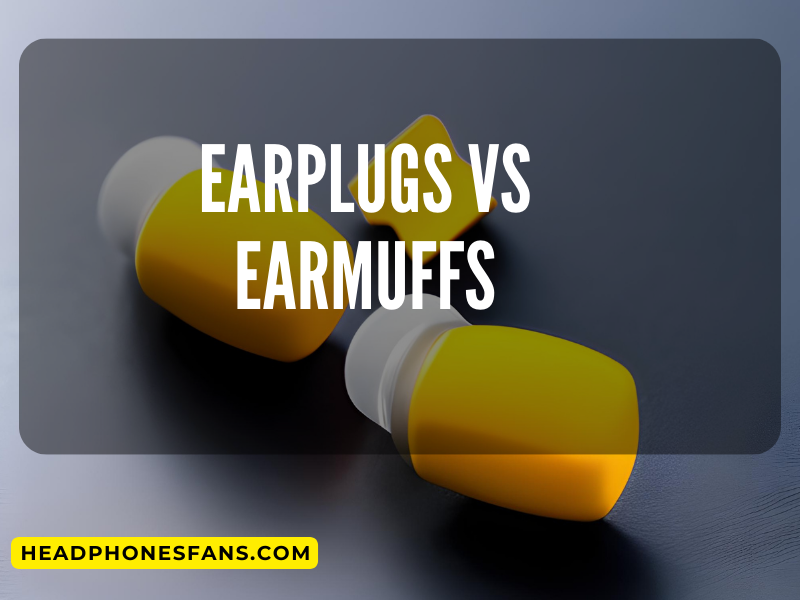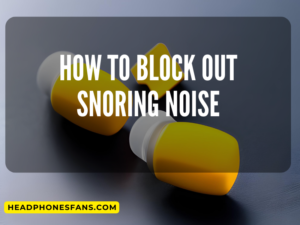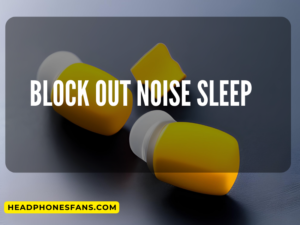The importance of ensuring your hearing's safety can't be overstressed. Especially in environments of high decibel levels, the choice of an apt hearing protection device plays a critical role. This write-up aims to provide a comprehensive guide between two popular options, earplugs and earmuffs, helping you make an informed decision.
- Overview of this article's content and motive
- Delving into what a Hearing Protection Device is and its advantages
- Evaluating earplugs and earmuffs and their respective pros and cons
- Detailed descriptions of different types of earplugs and earmuffs
- Finally, a summarization and encouragement to choose wisely based on individual needs
- Opening the World of Hearing Protection
- Comparing Earplugs and Earmuffs: A Battle of Advantages
- Diving Deeper: Earplugs
- An Overview: Earmuffs
- The Detailed Spectrum: Earplugs
- Exploring the Realm: Earmuffs
- The Balancing Act: Earplugs Vs. Earmuffs
- In Conclusion: Your Ears, Your Choice
- The Final Word: Protecting Your Hearing
Opening the World of Hearing Protection
To protect our ears from damaging noises, we turn to a myriad of tools collectively known as Hearing Protection Devices (HPDs). The primary function of these devices is to reduce the level of noise reaching your eardrums, thereby minimizing the risk of Noise-Induced Hearing Loss (NIHL). The usage of these instruments not only guards against potential hearing loss but also aids in maintaining concentration and reducing stress in noisy environments.
Comparing Earplugs and Earmuffs: A Battle of Advantages
When it comes to earplugs, they are small devices inserted into the ear canal to protect against harmful noise levels. On the other hand, earmuffs are worn over the entire ear, forming an air seal to keep out damaging sounds. Both have their unique benefits and drawbacks that make them more suitable for different situations.
Earplugs, for instance, are generally more portable, easier to wear with other protective equipment, and often more comfortable in hot environments. However, they can be more challenging to fit correctly, especially for people unfamiliar with their use, and hygiene can be a concern as they need to be cleaned or replaced regularly.
Earmuffs, in contrast, are typically easier to fit, can provide more consistent protection, and can be shared between people. They are, however, often more expensive, can interfere with other protective equipment like glasses or helmets, and can be uncomfortable in hot environments.
Diving Deeper: Earplugs
As small as they might seem, earplugs come in a variety of types each designed for specific needs. From foam earplugs, known for their low cost and disposability, to custom molded earplugs that provide a tailored fit, each type offers different levels of comfort and noise reduction. Other types include musician's earplugs, designed to reduce noise levels while maintaining sound fidelity, and electronic earplugs, which can amplify quiet sounds while blocking louder ones. Despite their advantages, earplugs also carry certain drawbacks, such as being easily misplaced and possibly leading to ear infections if not adequately cleaned.
An Overview: Earmuffs
Much like earplugs, earmuffs also come in a plethora of types to suit a range of needs. From standard earmuffs, also known as ear defenders, to the click-onto-helmet earmuffs for specific industrial applications, there's an option for everyone. Some other types are active electronic earmuffs, that amplify ambient sounds while blocking harmful noise, and active noise reduction earmuffs, designed to cancel out low-frequency noise. Nevertheless, earmuffs are not without their disadvantages. They can be bulky to carry around, uncomfortable in hot weather, and may not provide adequate protection if they do not fit properly over the ears.
The Detailed Spectrum: Earplugs
Earplugs, which come in an array of styles and materials, can be selected based on individual comfort and specific needs. Foam earplugs, for instance, are soft and expandable, offering a snug fit in the ear canal. Conversely, custom molded earplugs are customized to fit your ear perfectly, providing unparalleled comfort and noise reduction. Musicians' earplugs are explicitly designed to lower sound levels while maintaining sound fidelity, a vital feature for those in the music industry.
Electronic earplugs offer a fascinating technology, as they can amplify quiet sounds while reducing harmful ones. Meanwhile, non-linear acoustic filtered earplugs are the go-to choice for those needing to converse in noisy environments, as they filter out damaging sounds while allowing speech to be heard clearly. However, as versatile as earplugs can be, they are easily misplaced due to their small size, and hygiene can become an issue if they aren't regularly cleaned or replaced. You can check out some excellent earplug options here.
Exploring the Realm: Earmuffs
Like earplugs, earmuffs also offer a variety of types, each serving a different purpose. Regular earmuffs or ear defenders are a common choice for their simplicity and efficacy. The click-onto-helmet earmuffs provide additional protection for those working in industrial settings, integrating seamlessly with safety helmets.
For those who need to remain alert to their environment while also protecting their ears, active electronic earmuffs offer the ability to amplify ambient sounds while blocking loud, damaging noise. Lastly, active noise reduction earmuffs incorporate technology that cancels out low-frequency noise, making them an excellent choice for environments with continuous drone-like sounds. Despite their advantages, earmuffs can be cumbersome to carry around and might not be as effective if they don't form a proper seal around the ears. For more details about various earmuffs, you can read here.
The Balancing Act: Earplugs Vs. Earmuffs
It's critical to remember that both earplugs and earmuffs have their merits and limitations. While earplugs may be more suitable for individuals working in hot environments or those needing them for extended periods, earmuffs may prove beneficial for those needing intermittent protection or having trouble fitting earplugs. In some cases, both can be worn together for maximum protection.
The choice between earplugs and earmuffs ultimately depends on personal comfort, the nature of the noise, the work environment, and the specific needs of the individual. You can explore more about the earplugs vs earmuffs debate here.
In Conclusion: Your Ears, Your Choice
In the end, whether you choose earplugs or earmuffs, the most crucial aspect is that you're taking steps to protect your hearing. Remember that the most effective hearing protection device is the one that you're comfortable wearing and that meets your specific needs. Always prioritize your comfort and safety while using these devices, and don't hesitate to consult professionals if you're unsure about your choice. For more insights and tips on hearing protection, please check this out.
The Final Word: Protecting Your Hearing
As we wrap up this comprehensive guide on earplugs and earmuffs, it is vital to reiterate that your hearing is irreplaceable. In environments with loud or continuous noise, investing in quality hearing protection is not just a luxury but a necessity. Choosing the right device can mean the difference between preserving your hearing health or facing the risk of Noise-Induced Hearing Loss (NIHL).
Understanding the nuances of different hearing protection devices (HPDs) is the first step towards making an informed choice. Earplugs, with their compact design and diversity, offer a high degree of convenience and specific solutions for various situations. Earmuffs, on the other hand, bring a level of simplicity and consistency in hearing protection that can be more suitable for certain scenarios and individuals.
Often, the choice between earplugs and earmuffs boils down to personal preference, comfort, and the specific requirements of your environment. Don't be afraid to experiment with different types, or even a combination of both, to achieve the best hearing protection for you.
In conclusion, the journey of protecting your hearing is a personal and crucial one. We hope this guide has shed some light on the earplugs vs. earmuffs debate and has brought you one step closer to making the best decision for your hearing health. For more information on different types of hearing protection devices and how to choose the right one, don't forget to check out our other blogs here and here.
As you make your choice, remember: your ears are unique, and so should be the care you provide them. You can also check out our extensive guide on budget audiophile headphones here for some excellent alternatives to traditional hearing protection devices. Happy listening, and here's to your hearing health!

Hey there mobile audio lovers! My name is Darlene R, founder and chief editor at headphonesfans.com. Ask any mobile audio fanatic, installer, or company rep what makes a good car speaker, sub or amp, or, better yet, why he or she prefers a certain brand over another, and be prepared to endure a litany of opinions, viewpoints, and passion-fueled perspectives. To be honest, mobile audio shopping can be a daunting task without a guide, so I’ve assembled what I feel are the best products to consider to make things easier for you. Welcome headphonesfans.com!




